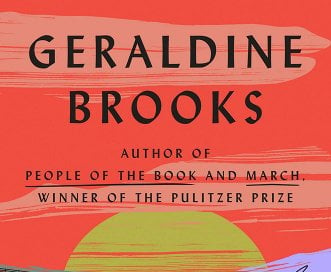This post contains an affiliate link or links. If you use a link to buy a book, I may earn a small commission. You can find all the books that have been featured in this newsletter in my Bookshop store.
I used to think of history as a noun. Throughout my primary and secondary education, teachers had me study history as if it were a lab earthworm, dissecting eras and events whose significance and key players had long been acknowledged and preserved. Then, in college, I took two classes from top scholars in their fields — American history taught by David McCullough, Asian American Studies taught by Gary Okihiro — and I began to think of history as a verb. A verb in that we are always shaping history by which stories we choose to tell, and whose. A verb in that how we choose “to history” has consequences for how we see and relate to one another.
“Horse,” the latest novel by Geraldine Brooks, exemplifies history as a verb. It illuminates untold stories at the intersection of race and art, with two interwoven narratives that take place in separate centuries.
One narrative, set in the slave-holding South, centers on a Black boy with a gift for training racehorses; his skill earns him a place in a commissioned portrait of his owner’s most prized horse, but still cannot put him on par with a white man.
The other narrative, set in contemporary Washington, D.C., centers on a white Smithsonian scientist and a Black art historian who become fascinated by a legendary racehorse and by each other; their relationship is continually tested by the racial tensions that form a through line in this country’s history.
I first came across Brooks’ work when I read “Year of Wonders,” a novel about living through the plague in 17th-century England. Brooks took a real event in the now-distant past and made it fresh by building out themes of loss, terror, perseverance and hope (the book got renewed attention during the first year of COVID-19, appearing on lists such as Book Riot’s “The 16 Best Pandemic Books”).
Brooks does something similar in “Horse,” inspired by the true tale of how the Smithsonian “lost” the skeleton of the legendary racehorse Lexington in an attic. Lexington’s forgotten story becomes the foundation for other stories either untold or overlooked, including the Black trainers who contributed to horse racing; the painters who specialized in equestrian art; and the influence of art collector, dealer and gallerist Martha Jackson (yes, she has a horse connection, too).
Brooks has taken some heat for writing two Black male characters as a white woman. She notes in her afterword that she relied on several readers who “shared insights into contemporary Black experience,” including one of her sons. As a member of a racial minority, I thought she captured well what it’s like to not be white in America. And I keep coming back to this: If not for Brooks, these stories might still remain untold.




I have read this one, and I agree, very thought provoking on “whose story gets told”.